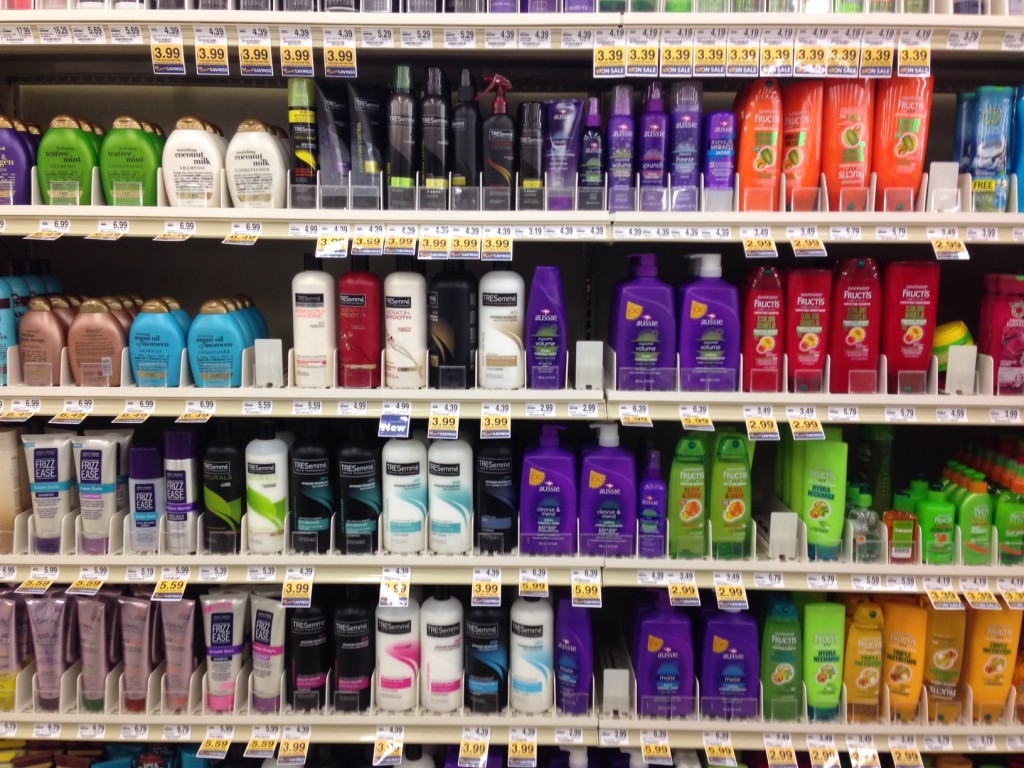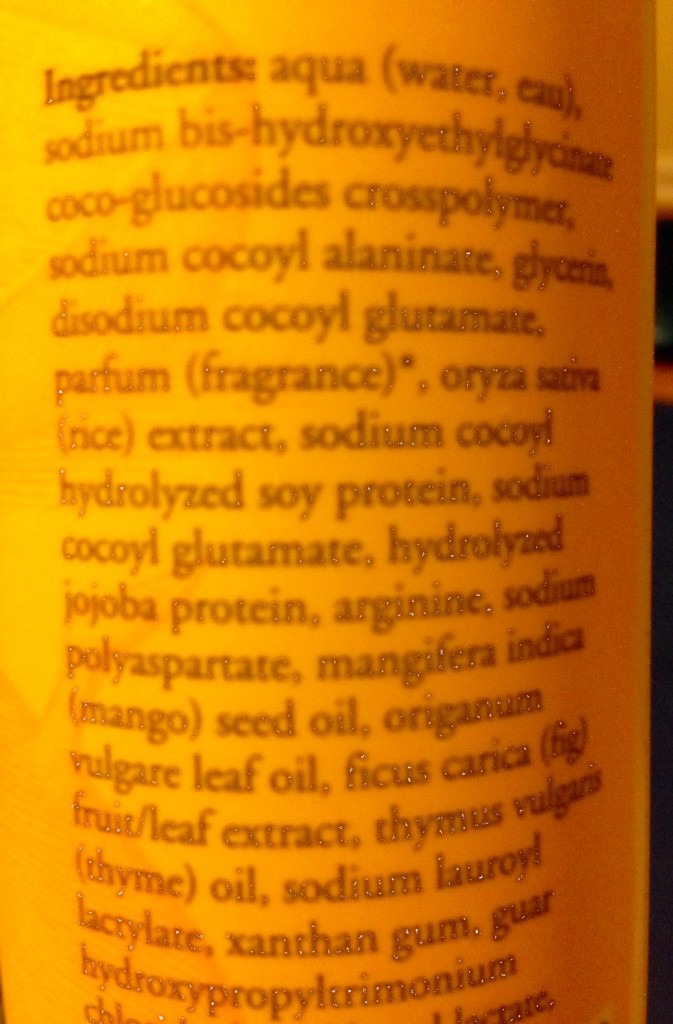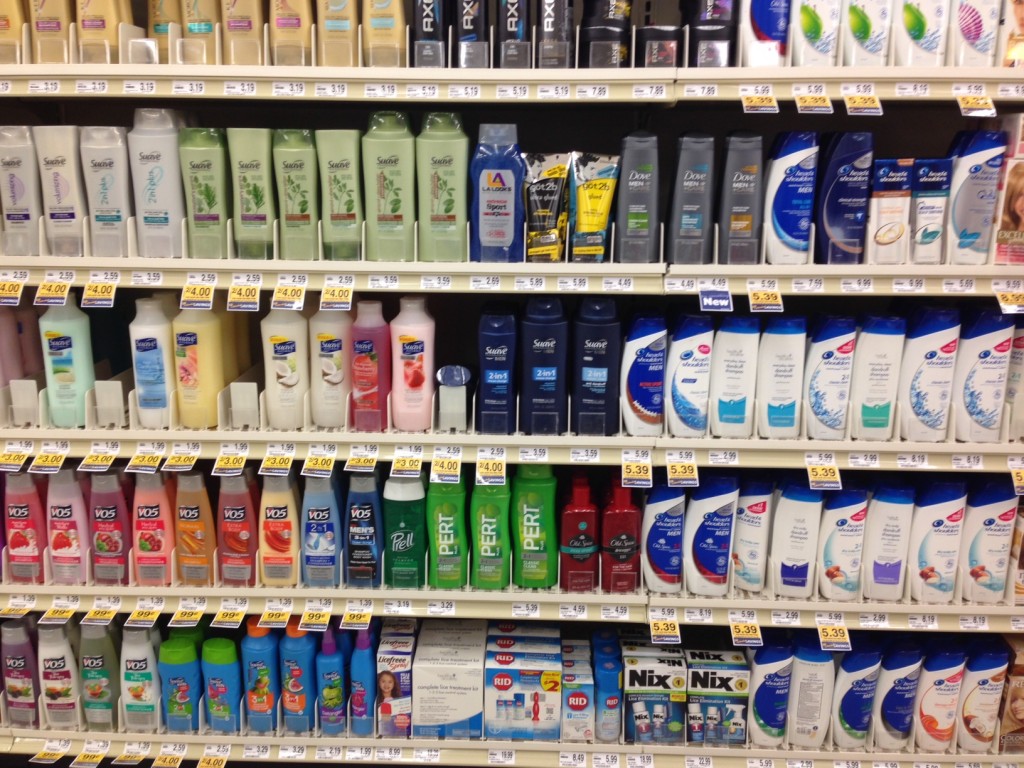A year ago, Nic School blogger Sara Sunu wrote about her quest to find “eco-friendly” hygiene and cleaning products. Reinvigorated by her post, this summer I vowed to try again with replacing one of my own hygiene products: shampoo. And I did- well, maybe? But, as evidenced by the many months that have passed since this summer, it was a much more circuitous journey than I expected it to be.

The Case for “No Poo”
It’s relatively easy to find “environmentally-friendly” dish liquid, laundry detergent, cleaners, toothpaste, and related products in any grocery store. The same often goes for shampoo (though not always, as I learned). But alternative hair-washing methods have become more of a trend in the past few years. Google Trends shows a steady increase in the search term “no poo” (meaning no shampoo) since 2005, with the most searches coming from Sweden, then Australia, the United Kingdom, and the United States. The “no poo” method (wiki) can take on many forms, ranging from eliminating shampoo all together to concocting homemade, “natural” alternatives.

While people have many different reasons for turning away from commercial shampoos, the No Poo movement still symbolizes an increasing awareness that most of what we put into or onto our bodies eventually ends up somewhere in the environment. In most places in the U.S., it heads to either a septic tank or a wastewater treatment plant. Chemicals in our medications, hygiene products, and processed foods may or may not be converted to environmentally benign forms before being released into the environment. Even though shampoos don’t represent the largest or most threatening source of emerging pollutants in the environment, they do represent something that individuals have control over with their consumer decisions.
Wastewater treatment plants currently do not have the capacity to treat, and are not regulated to treat, many compounds in the these everyday products. For shampoo in particular, the ingredients sodium laureth sulfate and parabens, for example, have raised concerns, although a search through scientific literature does not exactly validate nor disprove their environmental threat. Anti-dandruff shampoos have especially received attention because they contain the biocide zinc pyrithione or fungicide climbazole. Studies on aquatic organisms and microbial communities indicate these compounds could likely affect organisms in an environment that receives wastewater or sludge.

The Truth
We use shampoo largely because of social norms. In the mid 1900s it was average to wash your hair about once a month. It wasn’t until advertising convinced people otherwise that frequent shampooing became the norm, leading to more oil production on the scalp, fueling the cycle of shampooing. It’s possible to reduce your shampooing frequency, but it takes a transition phase for oil production to decrease, and the length of this miserable phase depends on the individual. I tried convincing myself I may be able to revert back to infrequent hair-washing, but instead I learned that the cold hard truth is that shampoo just works well, as it was designed to. Trying to find alternatives makes you appreciate the feats of chemical engineering that created the product. When I told my sister about the woes of my trials, she smirked while repeating DuPont’s former slogan, better living through chemistry.
And So It Began
My own journey began with the infamous baking soda method, which involves washing the scalp with dissolved baking soda and optionally rinsing the hair with diluted apple cider vinegar afterwards. I lasted a full six weeks, supposedly a long enough transition phase, before breaking down and using regular shampoo. This method has received negative attention because of the potential harm of using such non-neutral pH solutions. Based on my use over six weeks, if I did this for a year I would only need a little over two cups of baking soda and three cups of apple cider vinegar. A seemingly small footprint indeed, but it wasn’t going to happen.
Next, I searched homemade shampoo recipes. However, most of these required using an edible item as an ingredient, and I couldn’t bring myself to pour something over my head that someone could eat instead.
Next, I searched the Beaufort Farmer’s Market hoping that someone had already perfected a homemade shampoo recipe. I was in luck because Janie Zeller of SealZiti was selling homemade soaps which included relatively few ingredients. I used one of the bar soaps for lathering my hair, and it worked for a time but still would not cut it as a long-term solution.

Finally, I searched for some “natural” store-bought shampoos. I had wanted to avoid the plastic packaging, so it was a compromise. I found that it is imperative to read the ingredient list of these shampoos, since some “natural” brands contain the same ingredients as the regular brands. This is the option that I have settled on for now, though I plan to continue searching for alternatives in the future.
Assessing Your Options
To help with all of these searches and decisions, what I really needed was a life cycle assessment (LCA) of different hair-washing options. LCAs weigh the environmental impacts of all stages of a product’s life, such as the resources and processes need to make the product and its packaging, the shipping requirements for the product, the product’s use, and the disposal of the product and packaging. Since LCAs do not exist for all shampoo alternatives out there, hopeful no-poo-ers could start with these questions as they weigh their options: How much of this would I need to wash my hair for a year? What is the packaging of the product or the ingredients I am using to make my own shampoo, and where are these coming from? Is there information available about how the product or the ingredients affect ecosystems? (Check out Sara’s post for help with this last question).
Not all hair types and styles need regular washing. For everything else, less may be more. And for some people, a lot less may be a lot more.



I have straight, thin, oily hair.
I started using baking soda about 8 weeks ago, and I’m not sure I’ll ever go back to using more than just one ingredient! I just use baking soda, no vinegar, and it works like a champ. Then I can go about 3 days without washing again.
I have been embracing no-poo shampoo for just shy of 7 months now. I utilize the simple blend of raw unfiltered honey dissolved in filtered water. The natural oil production of my hair has dropped intensely and I now water-wash my hair without even honey for 5 days a week. I did a good bit of research before jumping in, and have never had a softer mane with less effort.